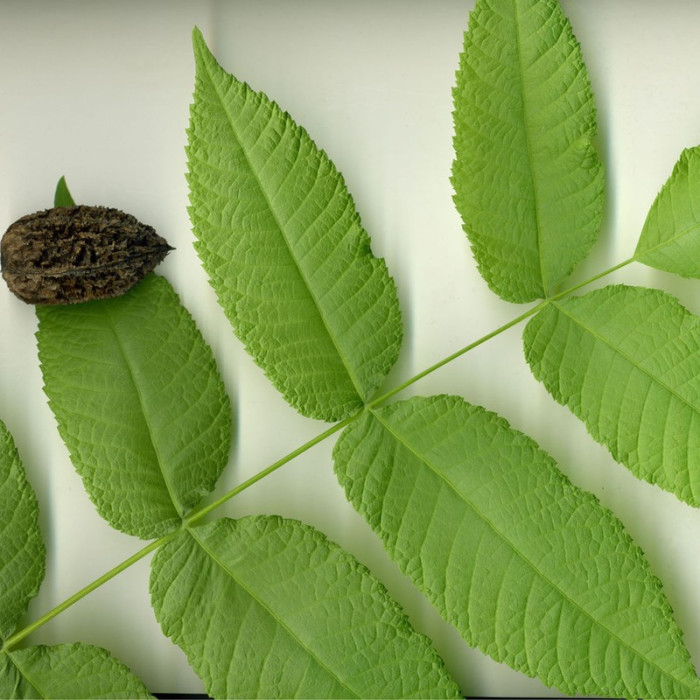White walnut or butternut / Juglans cineurea - in favorable conditions it grows up to 30 m and reaches a trunk diameter of up to 1 m. The crown of trees grown in freedom is broadly ovoid, openwork. The bark of the trunk is grey, deeply furrowed. Young shoots are gray, pubescent, with glands. Leaves 50-70 cm long, pinnate, 11-19 leaflets.
Leaves bloom at the end of May, fall off at the end of September; in summer they are light green, in autumn yellowish-brown. Male flowers in catkins 6-13 cm long, female flowers in racemes of 3, 6, 8.
Fruits are elongated-ovoid, pointed at the top, 6 cm long and 3 cm in diameter, the shell of the fruit is gray, densely felt, glandular, sticky. The nut shell is black-brown, thick, with sharp wavy protrusions between 8 sharp longitudinal ribs. The shell is thick, the core is not very large, but larger than that of the Manchurian, sweet, oily (fat content - 57-65%). The average weight of a nut is 13.4 grams, the kernel is 2.4 grams. The latter, along with walnut kernels, are used in the confectionery industry.
Blooms at the same time as the leaves open. The fruits ripen at the end of September. It enters the fruiting period at 6-10 years, bears fruit annually. It grows quickly, photophilous, but at a young age puts up with shading. Frost-resistant, can withstand frosts down to -35°C.
It is less demanding on the soil than Walnut and Black Walnut, and less moisture-loving than Manchurian walnut, but still grows better on fairly fertile and fresh soils. Reproduction, like other nuts. Durable - lives up to 200 years.
Gray walnut is decorative with its large feathery foliage and openwork crown. In gardens and parks, it can be used to create semi-shaded avenues, as well as for planting in tapeworms and in small loose groups.

No questions about this product, be the first and ask your question.


















